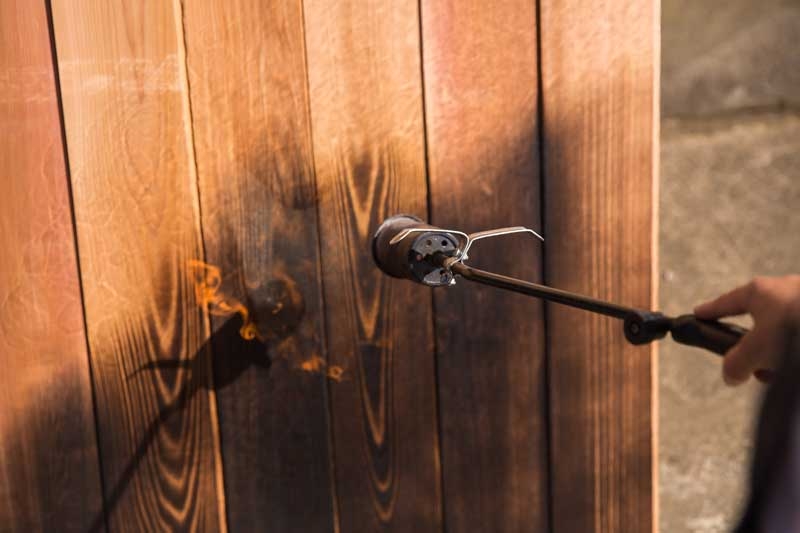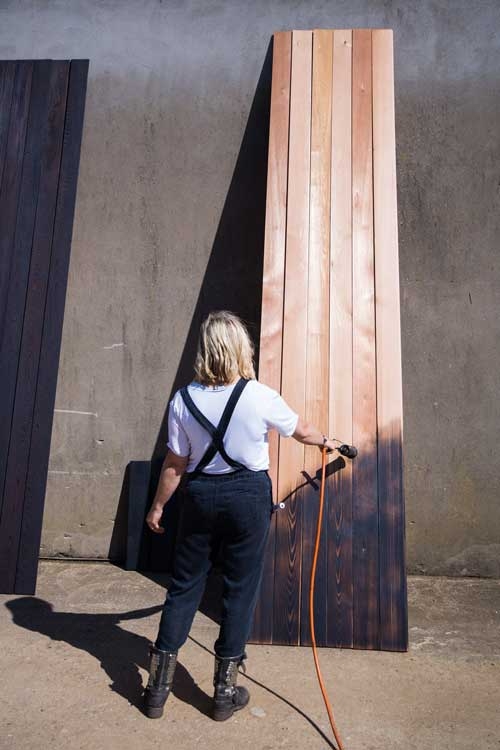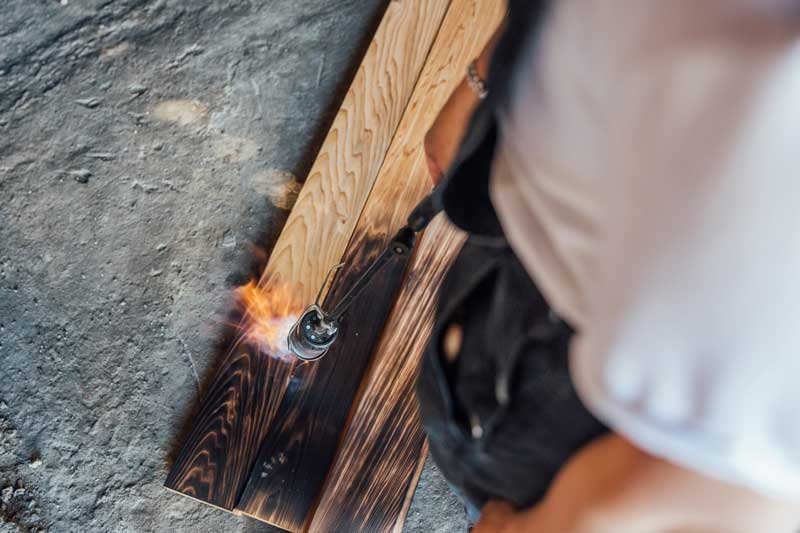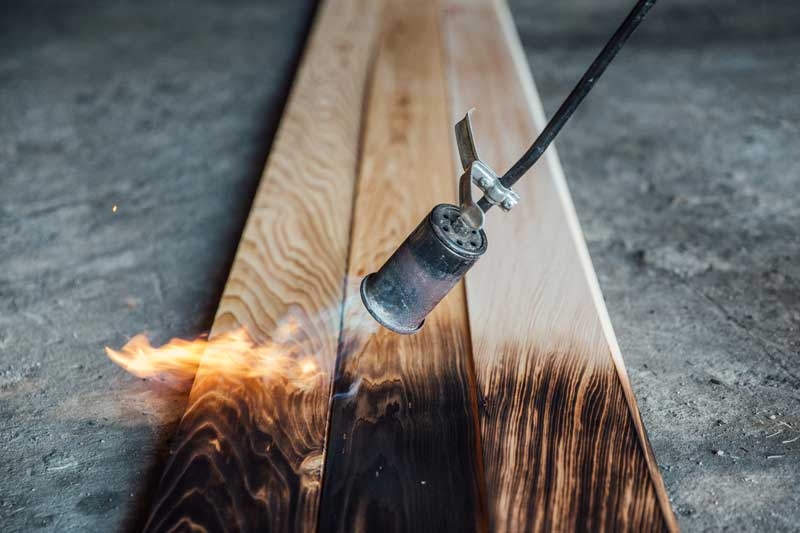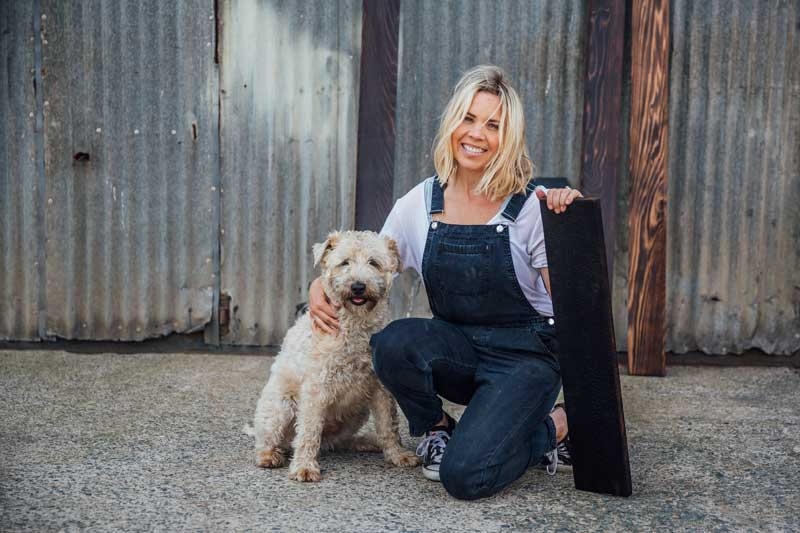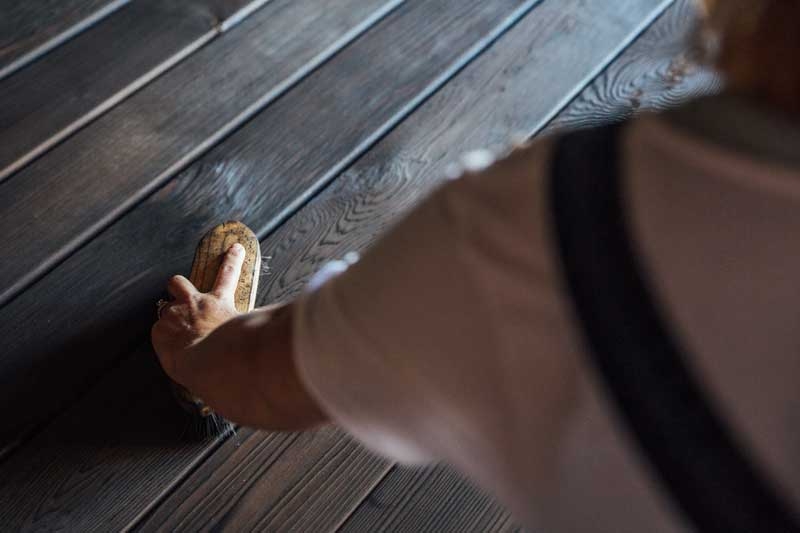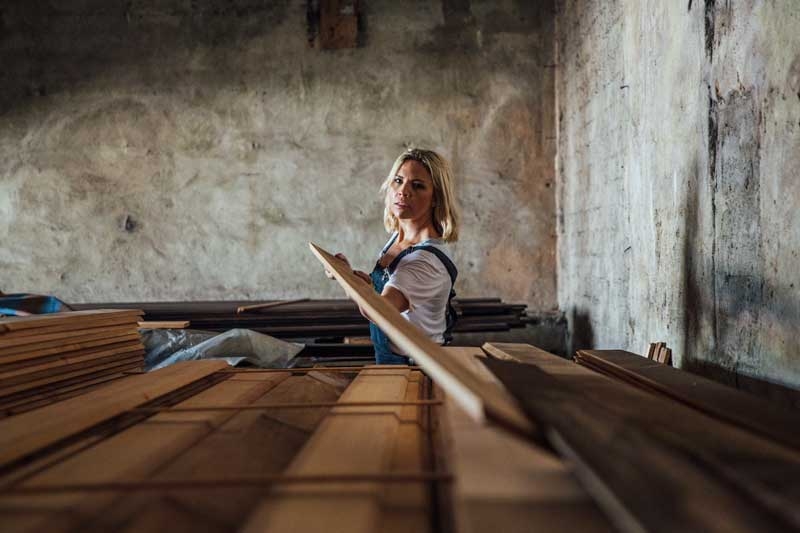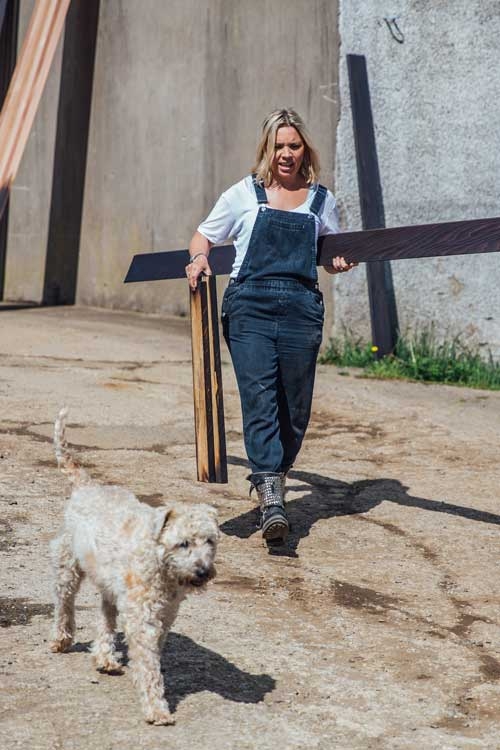Well besides the obvious-staring-you-in-the-face-gorgeousness of toasted timber there are a lot of more practical advantages to it as well.
Firstly, it’s fire proof! I know weird right? Have any of you have experienced the dread of going camping and letting the campfire go out? Well, try relighting that blackened charred kindling fellow campers!! Go right ahead. It doesn’t matter how much lighter fuel you saturate it with…that thing’s dead! So a completely practical side effect of this beautiful burning process is that the fire, fire proofs it!
Next up and something us Irish love discussing is the weather. We recommend a heavier char on your exterior toast as a certain depth of char is necessary to form a sufficient protective barrier on your cladding. The oldest wooden building in the world is still standing in its Shou Sugi Ban cladding (since 711AD)!!!
Insects can really cause problems to your home if they decide your cladding is their equivalent to Michelin star food heaven. Luckily they can’t stand the taste of charcoal! Another plus.
Lastly, your toasted timber is resistant to mould and spores and so it won’t green up like you may see on painted or stained wood. Take a minute to do a quick google search ‘when cedar goes bad’ and you’ll see the devastating effects of decomposing cladding. It’s not pretty.


